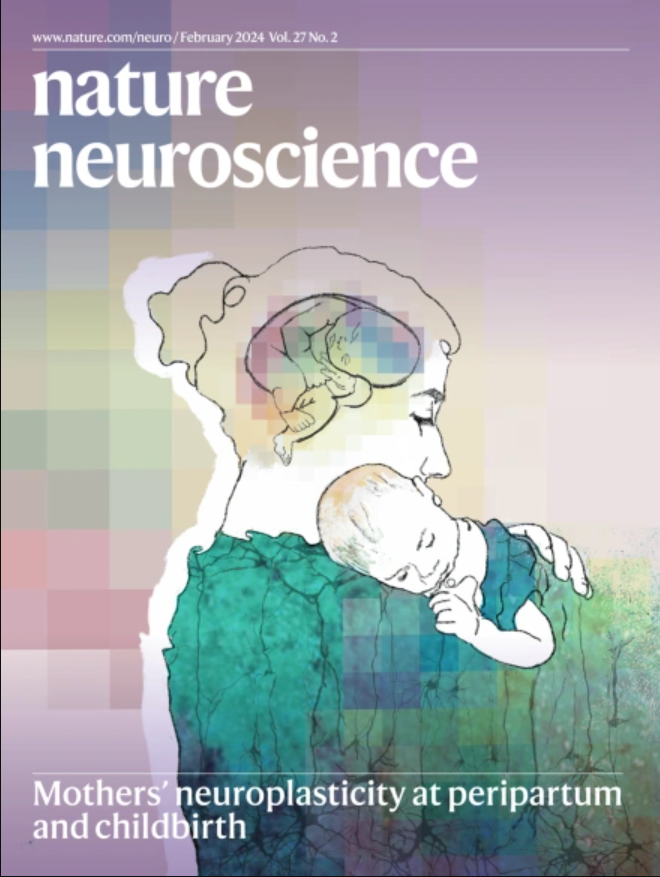Psychedelic 5-HT2A receptor agonism alters neurovascular coupling and differentially affects neuronal and hemodynamic measures of brain function.
IF 20
1区 医学
Q1 NEUROSCIENCES
引用次数: 0
Abstract
Human neuroimaging studies report that psychedelics induce serotonin-2A receptor-dependent changes in functional brain reorganization, presumably reflecting neuromodulation. However, these studies often overlook the potent vasoactive effects of serotonin. Here we identified psilocybin-induced alterations in hemodynamic response functions during human functional magnetic resonance imaging, suggesting potential disruptions in neurovascular coupling. We then used wide-field optical imaging in awake Thy1-jRGECO1a mice to determine whether psychedelic-induced changes in hemodynamics arise from neuronal, vascular or neurovascular effects. Exposure to the psychedelic 2,5-dimethoxy-4-iodoamphetamine (DOI) differentially altered coupling between cortical excitatory neuronal versus hemodynamic activity, both during whisker stimulation and in the resting state. Furthermore, DOI resulted in discordant changes between neuronal-based versus hemodynamic-based assessments of functional connectivity. A selective serotonin-2A receptor antagonist (MDL100907) reversed many of the effects of DOI. Our results demonstrate a dissociation between DOI-induced neuronal and hemodynamic signals, indicating a need to consider neurovascular effects of psychedelics when interpreting blood-based measures of brain function.致幻剂5-HT2A受体激动作用改变神经血管耦合,不同程度地影响脑功能的神经元和血流动力学测量。
人类神经影像学研究报告,致幻剂诱导脑功能重组中血清素- 2a受体依赖的变化,可能反映了神经调节。然而,这些研究往往忽略了血清素的强大血管活性作用。在这里,我们发现裸盖菇素在人体功能磁共振成像中引起的血流动力学反应功能的改变,表明神经血管耦合的潜在破坏。然后,我们对清醒的Thy1-jRGECO1a小鼠进行了宽视场光学成像,以确定致幻剂诱导的血流动力学变化是由神经元、血管还是神经血管作用引起的。暴露在迷幻剂2,5-二甲氧基-4-碘安非他明(DOI)下,在须刺激和静息状态下,皮质兴奋性神经元与血流动力学活动之间的耦合发生了差异改变。此外,DOI导致基于神经元和基于血流动力学的功能连通性评估之间的不一致变化。选择性血清素- 2a受体拮抗剂(MDL100907)逆转了DOI的许多影响。我们的研究结果证明了多巴胺诱导的神经元信号和血流动力学信号之间的分离,表明在解释基于血液的脑功能测量时需要考虑致幻剂的神经血管效应。
本文章由计算机程序翻译,如有差异,请以英文原文为准。
求助全文
约1分钟内获得全文
求助全文
来源期刊

Nature neuroscience
医学-神经科学
CiteScore
38.60
自引率
1.20%
发文量
212
审稿时长
1 months
期刊介绍:
Nature Neuroscience, a multidisciplinary journal, publishes papers of the utmost quality and significance across all realms of neuroscience. The editors welcome contributions spanning molecular, cellular, systems, and cognitive neuroscience, along with psychophysics, computational modeling, and nervous system disorders. While no area is off-limits, studies offering fundamental insights into nervous system function receive priority.
The journal offers high visibility to both readers and authors, fostering interdisciplinary communication and accessibility to a broad audience. It maintains high standards of copy editing and production, rigorous peer review, rapid publication, and operates independently from academic societies and other vested interests.
In addition to primary research, Nature Neuroscience features news and views, reviews, editorials, commentaries, perspectives, book reviews, and correspondence, aiming to serve as the voice of the global neuroscience community.
 求助内容:
求助内容: 应助结果提醒方式:
应助结果提醒方式:


